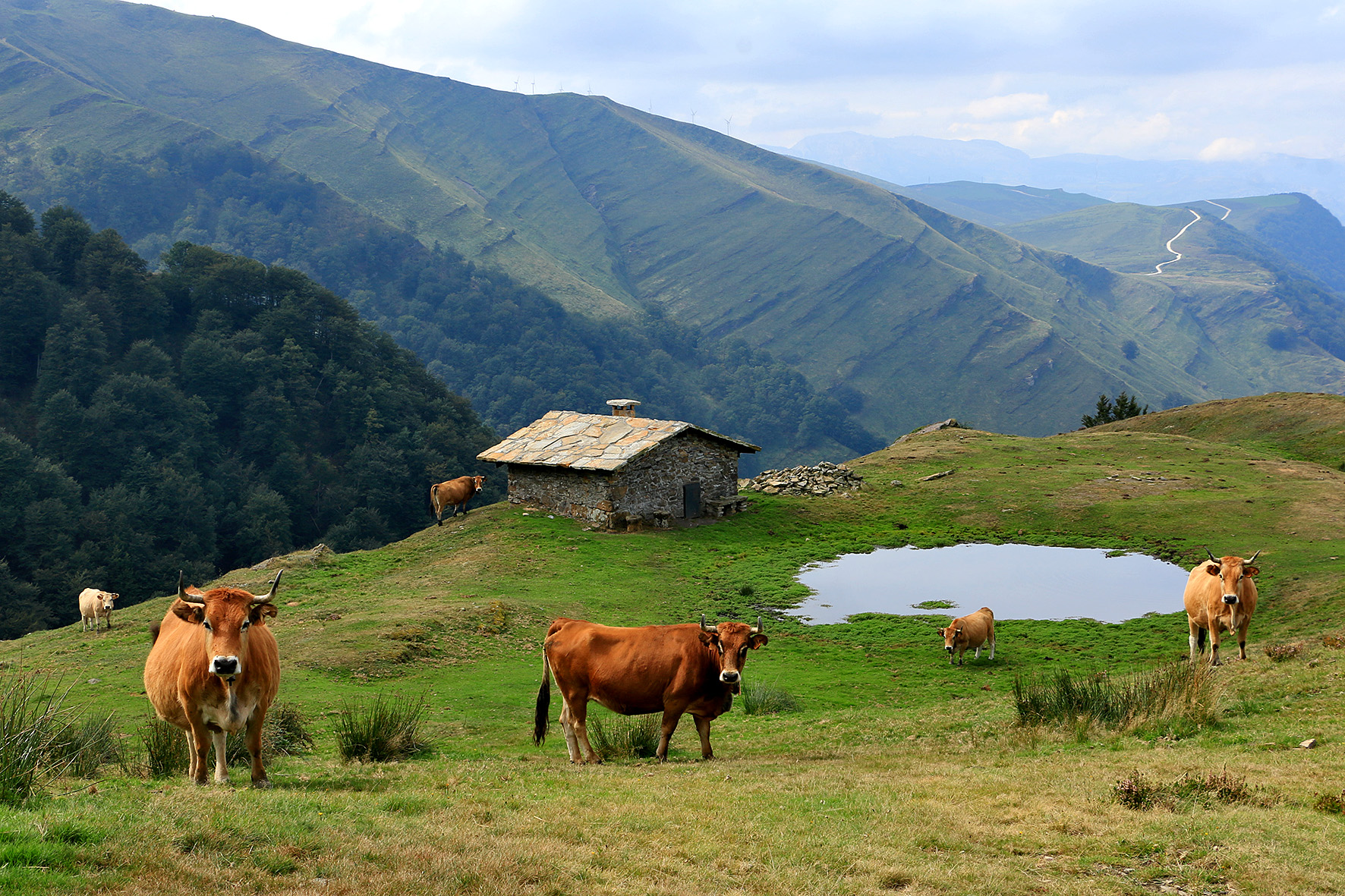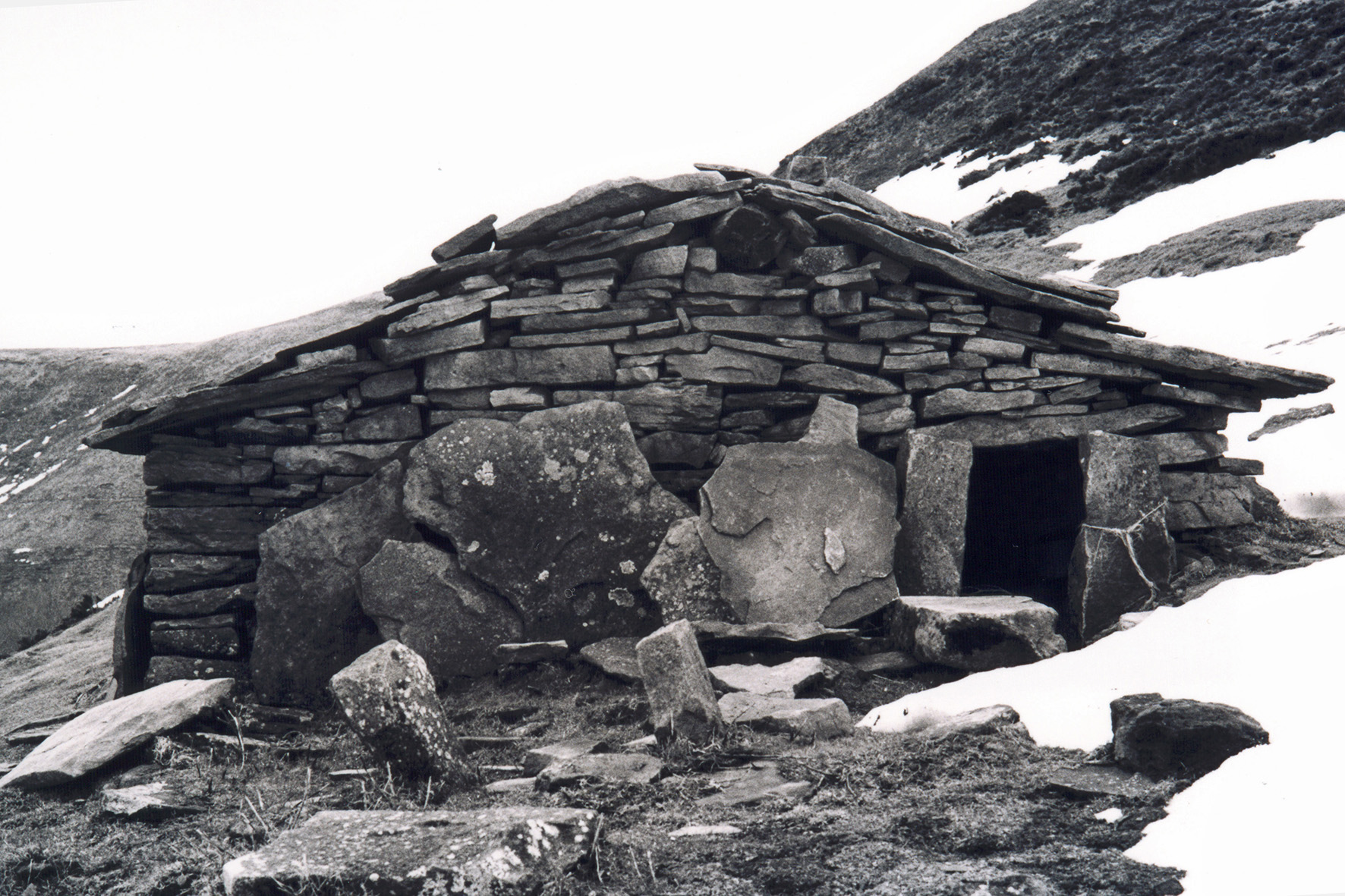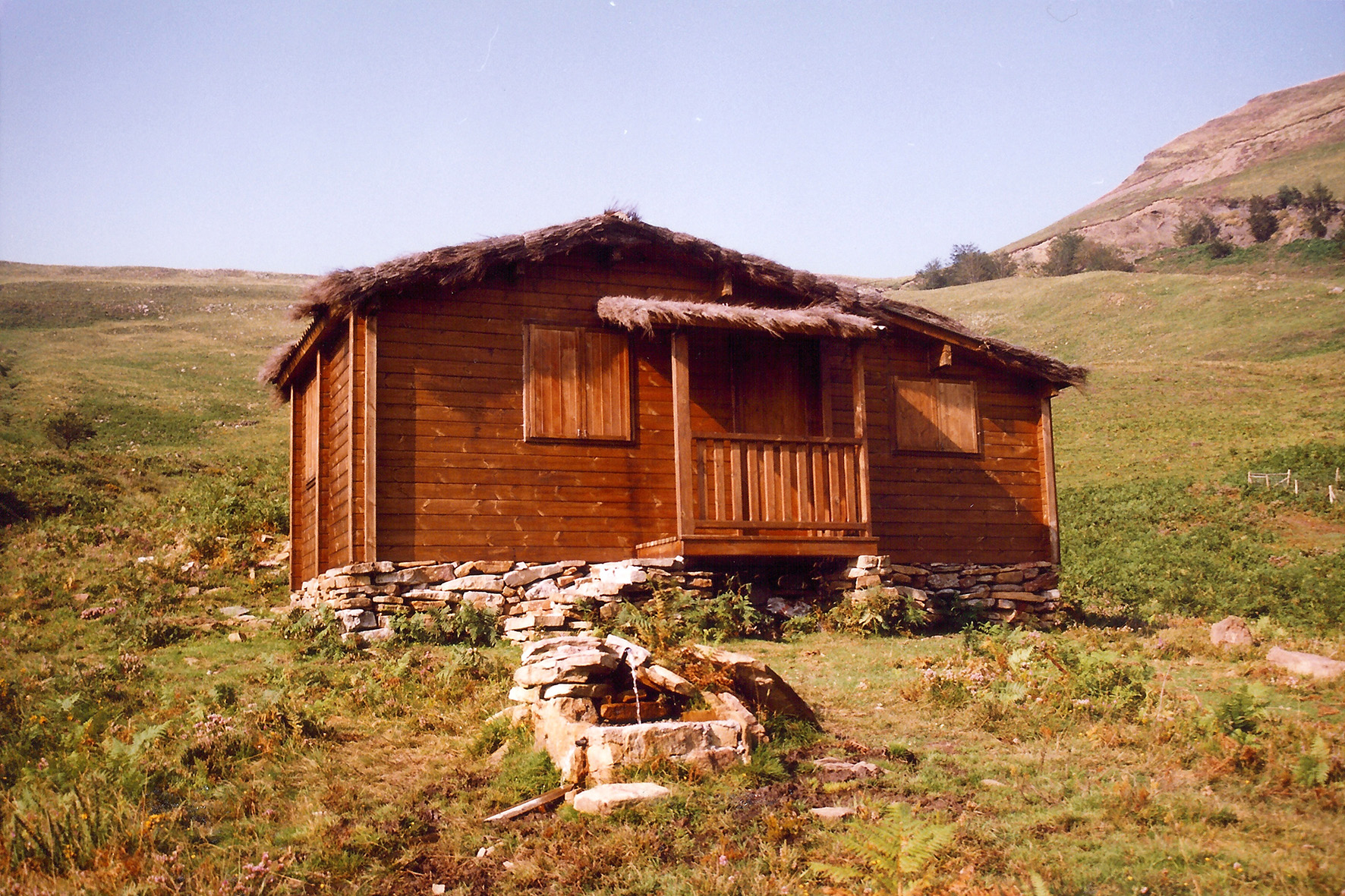Basque ethnography at a glance

Rebuilt dwelling for herders in Gumadernia. Carranza (Bizkaia), 2018. Miguel Sabino Díaz.
Since ancient times shepherds from the valley who grazed their flocks on hillocks and heights of the Ordunte Mountains belonging to the municipality of Carranza (Bizkaia) have used caves and rocky outcrops in the range, along with improvised shanty constructions for temporary shelter from inclement weather and protection against the presence of wolves and the grave danger they posed to the sheep.
Until the end of the first third of the 20th century some of the huts were made from readily available vegetable materials. Two triangular structures made with large oak or chestnut logs pinned to the ground and facing each other were used in their construction, a horizontal ridge beam resting upon them. Turf was piled up or branches neatly arranged and string-bound together on the front and the rear, leaving a small hole to get in and out. On either side sticks were planted firmly in the ground with little separation in-between, the ends meeting at the ridge and leafed branches placed over them. Pieces of turf were laid on top, grass side down, and layered so as to shed water away from the inner roof. A final layer of sheep droppings was sometimes spread for greater water-repellency.

Remains of a traditional hut in Saltipiñía. Carranza (Bizkaia), 1976. Miguel Sabino Díaz.
However, the most prevalent type of hut, built till well into the 1960s, was a small rectangular-shaped dwelling with dimensions measuring on average 4 m in length by 2 m in width and drystone walls of approximately 60 cm in thickness. A small opening around 1 m high and 80 cm wide reinforced with stone or wood allowed access to the inside. The entrance was covered with a flat stone in some cases, or wattle made of interlaced hazel rods and twigs in others. A thick beam was required at the peak of the gable, with rafters along the ridge and the sidewalls covered with stone slabs. In some instances the roof was grassed with turf, although less commonly.
The interior mostly consisted of a single space with a hearth in a corner and primitive bunks to sleep in. A thick wooden beam separated living and sleeping areas while providing seating by the fire. Shepherds lay on a decking made of hazel branches some centimetres off the ground and supported on two parallel beams. Bunches of heather covered with grass clippings served as mattresses, and maize husks or threshed wheat stalks might be placed on top for better comfort.
Carelessly scattered on the slopes and no longer in use, many of the huts have fallen into ruins. The few that have survived over the years, along with those rebuilt in more recent decades by the Forestry Service of the Provincial Government of Bizkaia, make up the current landscape through which the popular hiking route across Ordunte Mountains known as the Ranger’s Trail passes.

Log cabin in Saldelbao. Carranza (Bizkaia), 1996. Miguel Sabino Díaz.
Shortly after the reappearance of wolves in Ordunte Mountains in the early 1990s, the Provincial Government of Bizkaia erected several log cabins equipped with kitchen, living room, bedroom and toilet in the westernmost side of the range. The mentioned cabins were temporarily occupied by shepherds up to the beginning of the 21st century, when they stopped taking their flocks to the high pastures because of the continued attacks by wolves. Abandoned and ruined, they eventually disappeared altogether.
Miguel Sabino Díaz – Etniker Bizkaia – Etniker Euskalerria Groups
Translated by Jaione Bilbao – Ethnography Department – Labayru Fundazioa

